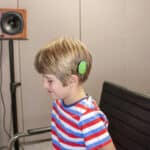
MED-EL
Published May 08, 2023
How Cochlear Implant Recipients Benefit From Intelligent Parallel Stimulation
Since 2006, each channel or pair of electrodes in MED-EL’s cochlear implants has had its own current source. These 12 channels with independent current sources allow each electrode pair to stimulate the cochlea with more flexibility. For instance, several different electrode pairs can stimulate different places in the cochlea at precisely the same time, which is often referred to as simultaneous or parallel stimulation.
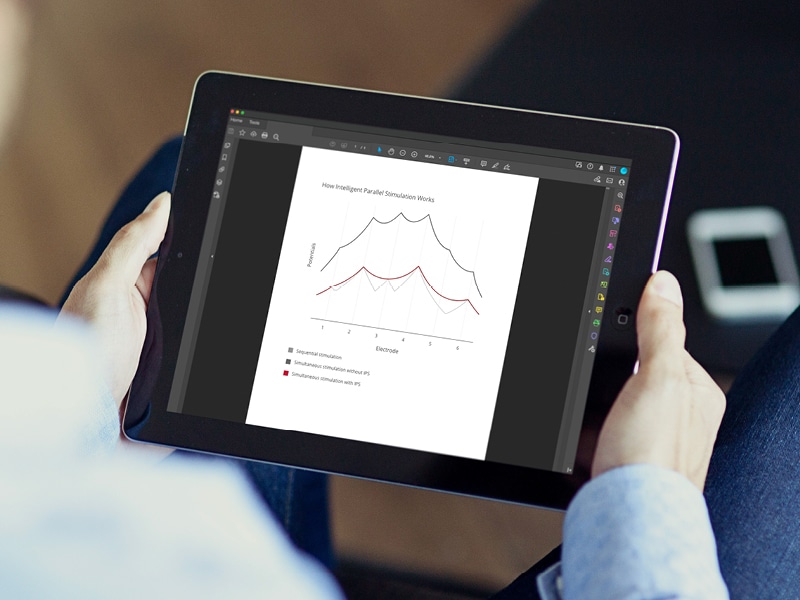
While parallel stimulation provides a lot of flexibility, it’s not simple because channels that are stimulated simultaneously interfere with each other. This is why, in practice, parallel stimulation would not result in the desired benefits in hearing outcomes without another technology: Intelligent Parallel Stimulation. Only MED-EL cochlear implants have patented Intelligent Parallel Stimulation (IPS) technology—a sophisticated algorithm in our audio processors that compensates for detrimental crosstalk, or interference, between channels.
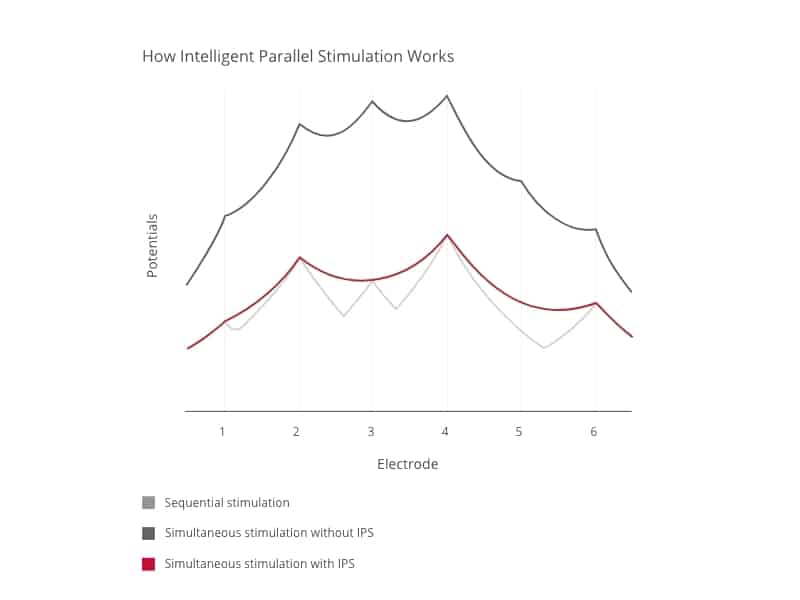
Intelligent Parallel Stimulation (IPS) compensates for the interference that occurs between electrodes. Without IPS, simultaneous stimulation leads to crosstalk and excessive potentials (dark gray). Simultaneous stimulation with Intelligent Parallel Stimulation reduces crosstalk and excessive potentials (red) to equal those of sequential stimulation (light gray).
IPS technology has opened up opportunities for innovation in sound coding strategies. This is crucial because coding strategies define the pattern with which the hearing nerve is stimulated. Thus, sound coding strategies have a great influence on hearing performance and sound quality perception.
In MED-EL’s approach to providing closest to natural hearing with cochlear implant stimulation, two aspects are important:
1) Stimulating along as much of the cochlea as possible. A prerequisite is a cochlear implant electrode array long enough to cover the cochlea so it can stimulate a full natural range of sound frequencies. You can’t accurately stimulate a specific frequency if the electrode array doesn’t physically reach that part of the cochlea. When this is attempted with shorter electrode arrays, the end result is place-pitch mismatch.
2) Mimicking natural rate coding (phase-locking) in the apical region of the cochlea. It is not only important to stimulate the entire cochlea but to stimulate it like nature does. In natural hearing, nerve activity in the low frequencies is synchronized with the phase of the incoming sound signal. This is called phase-locking. This paradigm is replicated in MED-EL’s FineHearing coding strategies: While all other channels stimulate in a regular time pattern, the four apical channels (“fine structure channels”) stimulate in time with the incoming sound. And this is where IPS may be beneficial.
Intelligent Parallel Stimulation & FineHearing Sound Coding Strategies
There are three different strategies available in FineHearing: FSP and FS4, which use strictly sequential stimulation, and FS4-p, which uses Intelligent Parallel Stimulation. When using the FSP and FS4 (the default in MED-EL cochlear implants) fine structure coding strategy, only one of the up to four fine structure channels in the apical region is stimulated at a time. In addition, all MED-EL cochlear implants since 2006 also have included the option to use the FS4-p coding strategy. This variant of MED-EL’s proven FS4 strategy allows two of the four fine structure channels to be stimulated at the same time, if required. Thus, the FS4-p coding strategy can provide enhanced temporal stimulation in the apical region responsible for low frequencies (from 70 to 950 Hz) with a higher degree of accuracy. In the apical region, time coding is crucial as more accurate stimulation in this area may improve perception of sound quality and music for cochlear implant recipients.
Cochlear Implant Users With Single-Sided Deafness May Prefer Parallel Stimulation
While a 2014 study from Riss et al. found that there was no significant difference in speech in noise understanding when the coding strategies were compared,[2] research indicates that FS4-p may be the preferred strategy of MED-EL recipients with unilateral hearing loss, or single-sided deafness (SSD).[3]
A study from Tavora-Vieira and Rajan examined the speech perception and subjective preferences of 13 subjects with MED-EL cochlear implants with FLEXSOFT electrodes (31.5 mm in length) on one side and normal hearing on the other side. These unilaterally deafened CI recipients were provided with two maps and asked to compare the two programs—FS4 and FS4-p. Each day for two weeks, the subjects were asked to switch between the two maps in the morning and then complete a short questionnaire with each answer to be given on a 10-point scale. Five questions were included in the questionnaire. The results are shown below.
Subjective Benefit in Unilaterally Deafened Cochlear Implant Users: FS4 vs. FS4-p Sound Coding
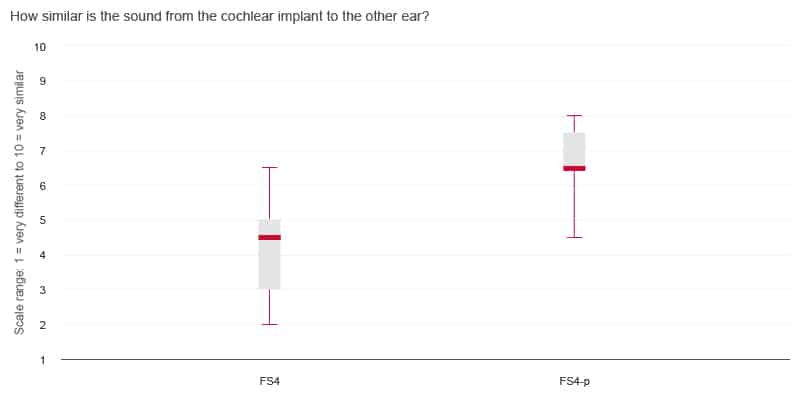
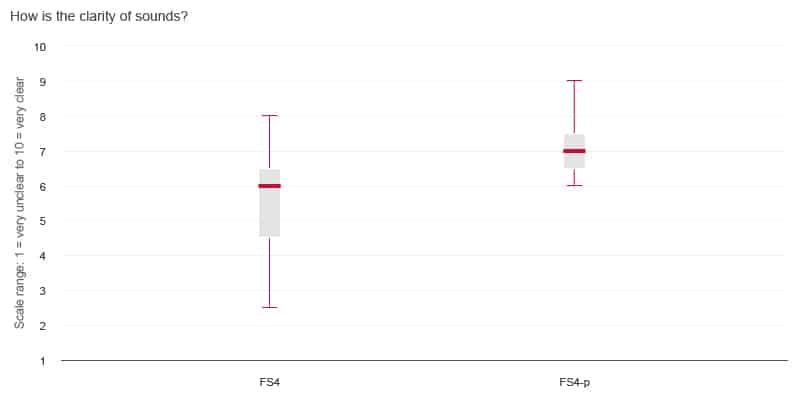
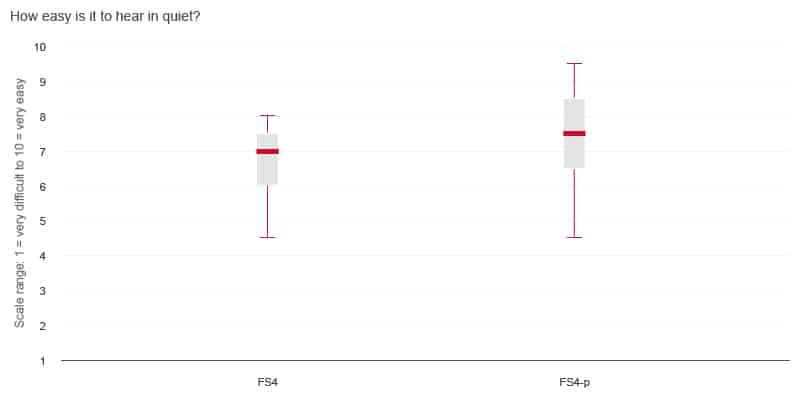
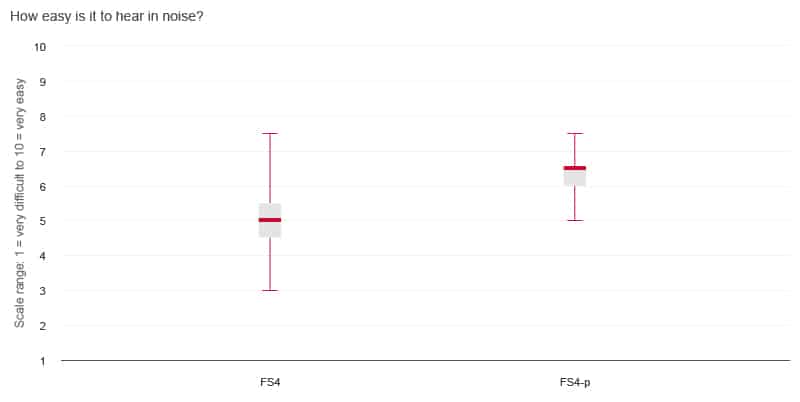
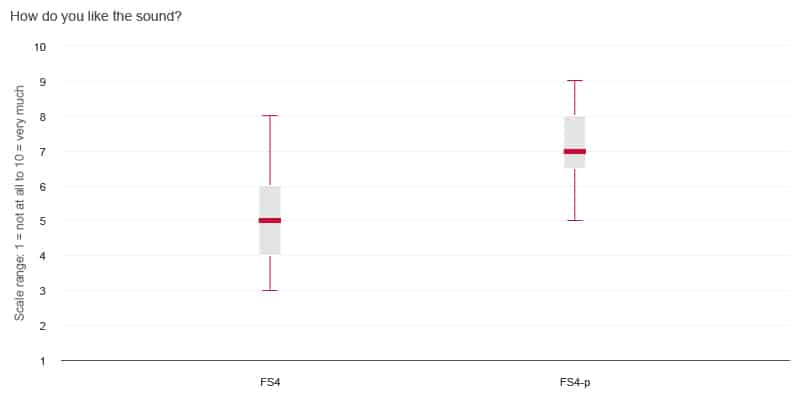
The results of the questionnaire shown above indicate that MED-EL cochlear implant recipients with single-sided deafness rate the sound of FS4-p as 26% clearer than the sound with FS4. In addition, when asked how much they like the sound on the scale from one to ten, FS4-p scored 36% higher than FS4. Tavora-Vieira and Rajan concluded that “the subjective benefit of FS4-p was significantly greater than the subjective benefit of FS4 on all five questions of the questionnaire.”
The authors of the study noted that patients with bilateral hearing loss may tend to rate quality “based solely on their auditory memory and/or an input from acoustic amplification on the contra-lateral ear” whereas unilaterally deafened cochlear implant users “are in the unique position of being able to assess and compare the quality of speech coding strategies directly with the correlating sound percepts of their normal hearing ear.” Thus, while research has shown that cochlear implant users with FS4 and FS4-p maps have similar speech perception scores, users with unilateral hearing loss may show a preference for sound with the FS4-p map over the FS4 map.
MED-EL Cochlear Implants: Closest to Natural Hearing Now and in the Future
Cochlear implants from MED-EL are equipped with independent current sources to provide Intelligent Parallel Stimulation and an electrode array long enough to stimulate the entire length of the cochlea. This provides your recipients with the closest to natural hearing at present, along with the option to choose between FSP, FS4, and FS4-p based on their personal preferences. Thanks to Intelligent Parallel Stimulation, MED-EL’s cochlear implants are also capable of providing more sophisticated stimulation if there are future sound coding advancements that require many areas of the cochlea to be stimulated at the same time.
More on FineHearing, Sound Coding, and Pitch Perception
References
- Schatzer, R., Koroleva, I. A., Griessner, A., Levin, S. V., Kuzovkov, V. E., Yanov, Y., & Zierhofer, C. (2015). Speech perception with interaction-compensated simultaneous stimulation and long pulse durations in cochlear implant users. Hearing Research, 322, 99–106. https://doi.org/10.1016/j.heares.2014.11.002
- Riss, D., Hamzavi, J., Blineder, M., Honeder, C., Ehrenreich, I., Kaider, A., Baumgartner, W., Gstoettner, W., & Arnoldner, C. (2014). FS4, FS4-p, and FSP: A 4-Month Crossover Study of 3 Fine Structure Sound-Coding Strategies. Ear And Hearing, 35(6), e272–e281. https://doi.org/10.1097/aud.0000000000000063
- Távora-Vieira, D., & Rajan, G. P. (2014). Assessment of Fine Structure Processing Strategies in Unilaterally Deafened Cochlear Implant Users. International Journal of Otolaryngology and Head & Neck Surgery, 03(06), 347–353. https://doi.org/10.4236/ijohns.2014.36062
References

MED-EL
Was this article helpful?
Thanks for your feedback.
Sign up for newsletter below for more.
Thanks for your feedback.
Please leave your message below.
CTA Form Success Message
Send us a message
Field is required
John Doe
Field is required
name@mail.com
Field is required
What do you think?
The content on this website is for general informational purposes only and should not be taken as medical advice. Please contact your doctor or hearing specialist to learn what type of hearing solution is suitable for your specific needs. Not all products, features, or indications shown are approved in all countries.

MED-EL

MED-EL



